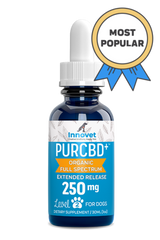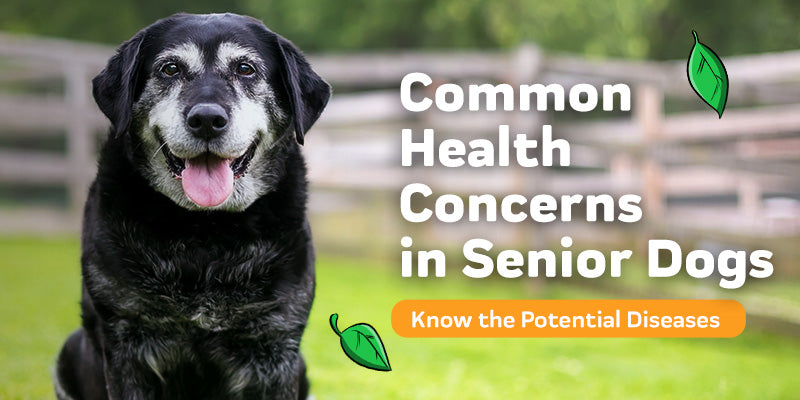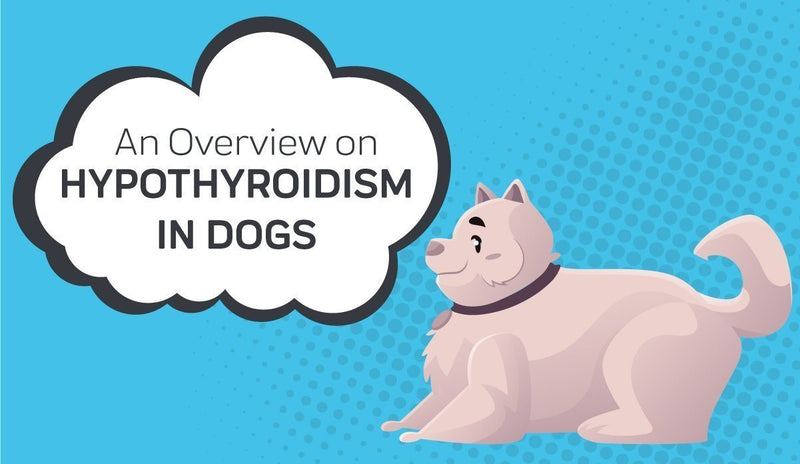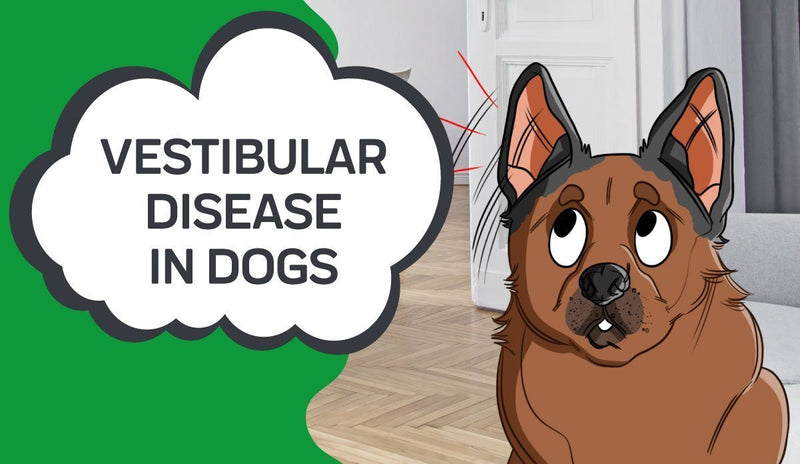
Degenerative myelopathy in dogs is one of those, particularly dreaded diseases. We all know them, the ones that make you say, "oh, no, I hope it's not that". Having to watch your dog's health rapidly decline and be unable to live a normal life is heartbreaking and it can lead to more health concerns.
Thankfully, it's not all bad. There are doggy wheelchairs that can help your dog maintain a more mobile lifestyle and enjoy themselves, and there are natural treatments, like CBD oil, that can greatly improve your dog's quality of life. Your dog can live longer and better with degenerative myelopathy than you are imagining.
- What is Degenerative Myelopathy in Dogs?
- How to Know Your Dog Has Degenerative Myelopathy
- Symptoms of Canine Degenerative Myelopathy Stages
- Causes of Degenerative Myelopathy in Dogs
- Diagnosing Degenerative Myelopathy in Dogs
- Treatment Options for Degenerative Myelopathy in Dogs
- Using CBD Oil
- Purchasing CBD oil
- Innovations from Innovet
What is Degenerative Myelopathy in Dogs?

Degenerative myelopathy, or DM, is a debilitating disease impacting the spinal cord or nerves that vets commonly compare to ALS, or Lou Gehrig's Disease, in people.
A good first place to understand what you're dealing with if your dog is diagnosed with DM is to understand what the name means. Degenerative refers to the fact that the disease causes one's spinal cord to decline or deteriorate, while myelopathy states that it is a disease of the spinal cord.
Degenerative myelopathy is a disease actually of the white matter of the spinal cord, which is very bad, because it is the part of the spinal cord that transmits the signals the dog's brain sends to the various parts of its body telling them to move. As you might guess, that means it directly impacts the dog's ability to control their body, get around, and live any kind of normal life. Eventually, it will cause paraplegia, or paralysis of the hind legs, and potentially complete immobility.
Time
How to Know Your Dog Has Degenerative Myelopathy
Symptoms of Canine Degenerative Myelopathy Stages
Early Stage Symptoms:

- tremors in their hind legs
- hind leg weakness
- difficult moving their hind legs
- wobbling
- appearing uneasy or unsure when walking
- lack of coordination in their hind legs
- knuckling their toes when walking
- dragging their feet, which may be accompanied by worn down nails
- stumbling
- difficulty rising
The symptoms may be present in only one leg in the beginning and may only be noticeable when the dog performs certain activities like squatting to go to the bathroom or jumping.
DM in dogs is easily mistaken at this point for arthritis, hip dysplasia, and other diseases that are not quite as scary. Do not let this delay your visit to the vet!
If you can catch degenerative myelopathy quickly enough, you can begin treatments that can greatly improve the dog's outcome. It, unfortunately, cannot be cured, but you can have an important impact on their quality of life and efforts work better when begun sooner.
Intermediate Stage Symptoms:
- initial symptoms will increase and worsen
- damaged toes from dragging the feet
- begin finding it difficult to rise to stand or lower to lay down
- urinary and fecal incontinence
- inability to hold their weight on their hind legs
- muscle loss
- cannot walk without support
Advanced Stage Symptoms
- paraplegia, paralysis of the hind legs
- muscle weakness in all four limbs
- difficulty breathing if the disease makes it to the brain stem
- displaying pain
- anxiety
- complete immobility
- systemic infections
Pressure sores may begin at any stage if the dog becomes inactive enough. The likelihood of this will, of course, grow as the condition worsens. When paralysis sets in, it will be important to take proactive measures to ensure pressure sores do not develop.
Their hygiene may also decline at different stages depending on the dog's symptoms
Causes of Degenerative Myelopathy in Dogs
There is still a lot that is not understood about degenerative myelopathy.
One of the primary beliefs is that DM is an immune disease where the dog's immune system thinks its nervous system is a harmful element and attacks it. This comes from an inherited genetic mutation. It is possible to test for the gene, but it is not very helpful because all dogs that have the gene do not get degenerative myelopathy.
Vitamin deficiencies, toxins, and oxidative stress are also likely causes of degenerative myelopathy. You could discuss this potential with your vet and see if it impacts treatment and outcome.
Many dog breeds have an increased risk of developing DM:
- American Eskimo Dogs
- Bernese Mountain Dogs
- Boxers
- Briards
- Cardigan Welsh Corgis
- Chesapeake Bay Retrievers
- Dalmatians
- German Shepherds
- Golden Retrievers
- Great Pyrenees
- Irish Setters
- Kerry Blue Terriers
- Miniature Poodles
- Pembroke Welsh Corgis
- Pugs
- Rhodesian Ridgebacks
- Samoyeds
- Siberian Huskies
- Soft-Coated Wheaten Terriers
- Standard Poodles
- Weimaraners
- Wire Fox Terriers
Any dog can develop degenerative myelopathy, but they are much more likely to
Diagnosing Degenerative Myelopathy in Dogs
DM is one of those diseases where the diagnosis comes from excluding things it isn't. There is no test to prove DM directly that can be performed until after the dog has passed.
The vet will want to discuss the dog's symptoms and lifestyle with you and to examine the dog for signs while in their office.
To discover what the disease isn't, they may run several tests:
- thyroid tests
- cultures
- MRIs
- CTs
- X-rays
- biopsy of spinal cord fluid
A DNA test before the onset of degenerative myelopathy can tell you if your dog has a greater risk of developing it. There is no guarantee, just higher risk. You can use this knowledge to promote the dog's health to reduce their chances, improve their diet,
Treatment Options for Degenerative Myelopathy in Dogs
Since there is no cure for degenerative myelopathy, treatment consists of maintaining the quality of life. This is actually more hopeful than you probably think.
Do be aware though that treatment for degenerative myelopathy requires extensive nursing. Your ability to be an active part of the dog's health will dramatically impact the length and quality of their life with DM.
Exercise
First, give your dog as much exercise as you can for as long as you can, without getting so carried away you exhaust the poor thing.
Exercise can be maintained for quite a long time with both harnesses, allowing the dog to still walk with your assistance, and doggy wheelchairs. As long as the dog's front legs still work, they can be quite mobile and enjoy the physical and mental benefits of exercise with a doggy wheelchair. You've probably seen videos online of paralyzed animals in wheelchairs getting around almost as well as they always did. It's amazing.
Even if the dog does become unable to use all of its limbs, there are wheelchairs designed for dogs that support all of their legs.
Aquatic exercise is also quite helpful for dogs to get exercise without having to support their weight, extending their ability to get exercise and maintain muscle mass for a much longer period of time.
As soon as your dog starts having difficulty getting around, enough that they act hesitant about exercise or seem too unsteady to do it safely, you should get them a degenerative myelopathy harness.
Booties
People make booties to protect dogs' feet against damage from being dragged.
That being said, they are often overused and can cause additional problems for the dog.
Don't:
- leave the booties on all the time
- use them for their walks
Do:
- walk the dog on grass as much as possible
- use booties if their feet drag in the wheelchair
There are two problems with booties, one is that using them for all of their walking makes it hard for them to walk correctly, which interferes with the dog's ability to maintain the use of their legs, and the other is it can make them fall and hurt themselves. They certainly don't need an injury on top of their disease.
The booties can protect the dog's feet in the wheelchair without causing a problem because they don't have to bear down or balance and aren't at risk of falling.
Diet
The dog's diet can play a big part in their prognosis.
Their immune system, inflammation, and vitamin deficiencies can be addressed with diet. It might be best for you to discuss the particular diet with your dog's vet to personalize it to their needs, their weight, their exercise level, and their tastes.
It's easy with homemade diets and foods to not give your dog the proper nutrition and cause other health problems.
Bedding
As they start spending more time laying down, it is important to ensure they have proper bedding and that the bedding is maintained properly.
They will need well-padded, supportive bedding, think as strong as a human bed for larger dogs. If you have the room for it, give them a human mattress or air mattress. Sleeping bags and enough thick blankets may be enough for small dogs.
You can purchase special pet beds.
Regardless of what you pick, make sure to change the bed coverings or top layers frequently.
Weight Gain
As the dog moves less, they're also likely to gain weight or become obese. This can make moving more difficult for them and generally cause a decline in health.
Prevent weight gain through diet management, such as with fewer treats or no treats, and low fat, healthy dog food. Table scraps will often be a bad idea as this is a common cause of dog weight gain. If you don't want to cut them out altogether, try lessening them drastically and/or being picky about whether they're eating high calorie or high-fat human foods. Be as aggressive with the diet as needed to go with their exercise level and weight.
Pressure Sores
When a dog starts laying down more than usual or all the time, they develop bedsores. You can prevent this by keeping them mobile as long as possible and turning them on a regular basis when they aren't mobile.
Scalding
When dogs become immobile, they can have accidents and you must be able to keep them clean to prevent urine scalding, ulcerations, and lesions.
Dogs with plentiful or long hair on their rear ends will need trimming to help keep them clean, the area just under the tail and around the anus, not their whole back end.
Preventing infections
Dogs frequently develop bladder and urinary infections or dog UTI with degenerative myelopathy because they may start not peeing regularly. This is very dangerous and must be treated.
Pain
If your dog is crying out in pain, it is necessary to get them help as quickly as possible because they are in an extreme amount of pain.
This unfortunately means your dog may be having pain before you know it or that they appear to be only a little uncomfortable when their pain level is really higher.
A natural, healthy pain treatment may be helpful at the first sign your pet may be in pain, and prescription pain medication may eventually be required if natural methods aren't cutting it.
If your dog starts crying out in pain during off hours, don't think you have to put off getting help until the vet office opens again. Call your local emergency vet, your vet's office should give you the number if you call during off hours, and ask them if they can see the dog or advise you on a human medication to give your dog until you can get to a vet.
CBD Oil
CBD oil is a seemingly magic supplement for a staggering number of issues, many of which may apply to your dog with degenerative myelopathy.
First, let's discuss what CBD oil is. It is called cannabidiol, and it comes from the hemp plant. Do you know how people discuss the medical benefits of marijuana? Well, cannabidiol is part of that, in fact, it can work more effectively than marijuana because marijuana contains the "high" causing chemical THC and can make users feel drastic benefits for a short time and then suffer a crash. Cannabidiol has been shown to be more subtle, last longer, and help the body do what it already does in a better, more efficient manner.
CBD oil for dogs may help with degenerative myelopathy:
- have less inflammation
- reduce pain
- enjoy more energy
- metabolize food better
- stress less
- gain extra nutrition
- prevent infections
Using CBD Oil
There are several CBD oil products available that may help your dog:
- Lotions are great for soothing pressure sores and other lesions, helping them heal and preventing infection in the sore.
- CBD oil tinctures
- CBD Extract concentrates
- CBD Hemp capsules
- Hemp treats
- CBD Topicals
Tinctures, concentrates, capsules, and treats are given orally. Treats are, of course, the most enjoyable method and come in crunchy or chewy kinds to suit your dog's tastes. Tinctures and concentrates are the most versatile and cost-effective treatments, and capsules are great for dogs who take pills better than other methods of medication delivery and who don't like the taste of hemp. Concentrates contain nothing but CBD and hemp oil and taste just like hemp. If your dog doesn't like that, you'll have to cover up the taste yourself by delivering the medicine in a food or beverage. Most oil tinctures are flavored, but you'll have to make sure you buy one that is and that they enjoy the flavor.
Treats and capsules are easier for dosing control as they have set dosages on the package, based on the size of the dog. You'll have to choose small, medium, or large for your dog's size. There may be instructions to give one or more treats to reach a certain dose.
Oil tinctures and concentrates provide you with more variability to get the specific dose your dog needs. Tinctures come with either a dropper or sprayer to be applied directly to the dog's mouth or food. Drops and sprays contain certain amounts for you to measure by the number of them.
Always start with a smaller dose and work up in a week or few weeks increments to reach the effective dose amount for your dog. You can ask your veterinarian for guidance to get the exact dose for your dog, though some trial and error will still be needed.
Purchasing CBD oil
Not all CBD oil is equal.
Make sure you are buying CBD oil that:
- contains no THC
- is third-party tested and shows results online
- was extracted using the CO2 method
- was grown in a country with good growing regulations
You also need to know the difference between full-spectrum and CBD isolate. CBD iso is just CBD oil while full-spectrum CBD oil contains other cannabinoids, terpenes, and nutrients that come from the whole hemp plant. Full-spectrum is actually the most popular option, and it may be particularly beneficial for your dog with degenerative myelopathy because they may need additional nutrients. Should full-
spectrum not work for you, definitely try CBD isolate. Some people swear it works better for their specific case.
Innovations from Innovet
At Innovet, we make scientifically-backed CBD oil products for pets and humans to address hard-to-treat ailments. If your dog has unique needs or doesn't respond to CBD oil, let us know so we can try to develop a new product for your dog.
Sources:
Upregulation of CB2 Receptors in Reactive Astrocytes in Canine
Cannabinoid Treats as Adjunctive Therapy for Pets
Canine Degenerative Myelopathy
Degenerative Myelopathy in Dogs
Approved by:
Dr. Sara Ochoa
Doctor of Veterinary Medicine, St. Georges University

Sara Redding Ochoa, DVM was raised in north Louisiana. She graduated from LA Tech in 2011 with a degree in animal science. She then moved to Grenada West Indies for veterinary school. She completed her clinical year at Louisiana State University and graduated in 2015 from St. George’s University. Since veterinary school, she has been working at a small animal and exotic veterinary clinic in east Texas, where she has experience treating all species that walk in the hospital. In her free time, she likes to travel with her husband Greg, bake yummy desserts and spend time with her 4-legged fur kids, a dog Ruby, a cat Oliver James “OJ”, a rabbit BamBam and a tortoise MonkeyMan.
Thanks for stopping by!
P.S. We Love You!
Sincerely,
The Innovet Team
Please do not ask for emergency or specific medical questions about your pets in the comments. Innovet Pet Products is unable to provide you with specific medical advice or counseling. A detailed physical exam, patient history, and an established veterinarian are required to provide specific medical advice. If you are worried that your pet requires emergency attention or if you have specific medical questions related to your pet’s current or chronic health conditions, please contact or visit your local/preferred veterinarian, an animal-specific poison control hotline, or your local emergency veterinary care center.
Please share your experiences and stories, your opinions and feedback about this blog, or what you've learned that you'd like to share with others.


















